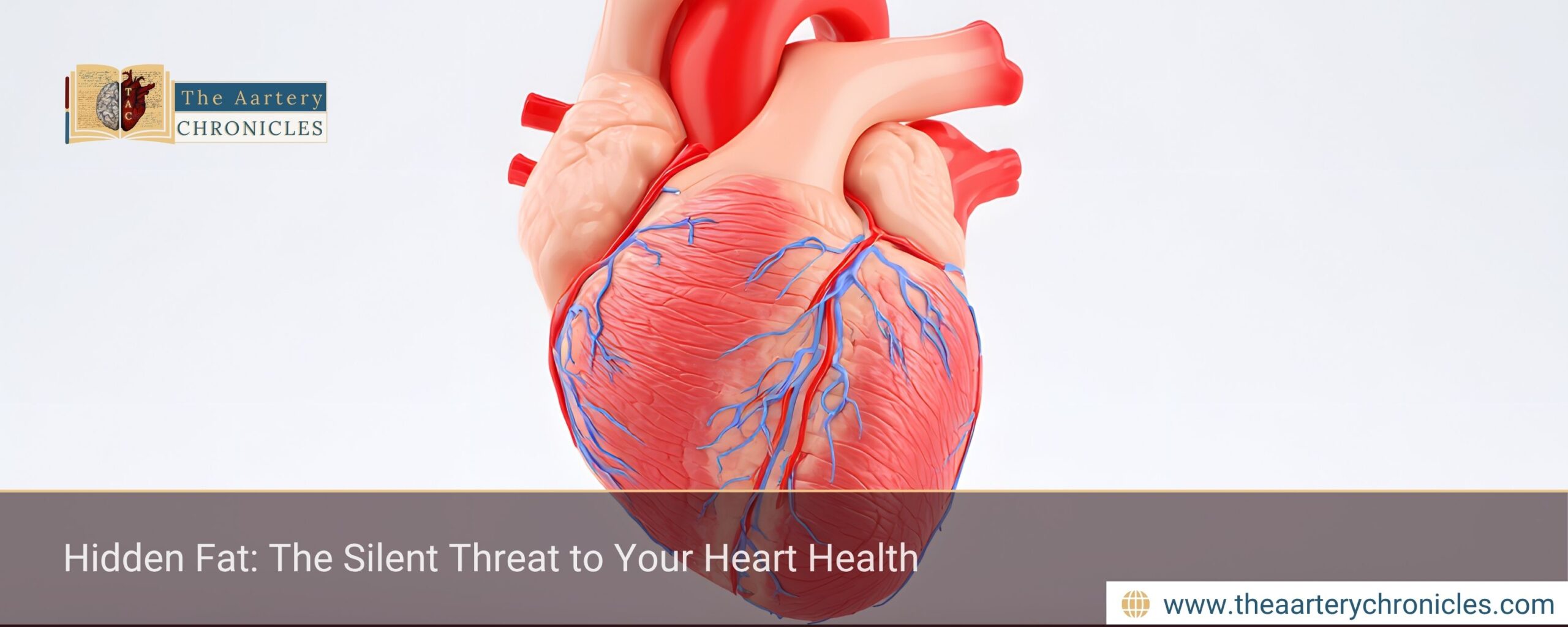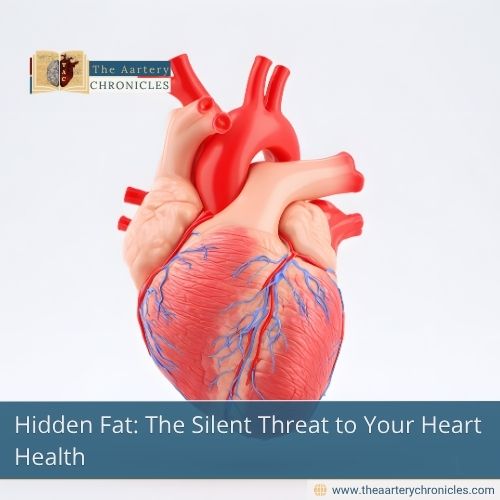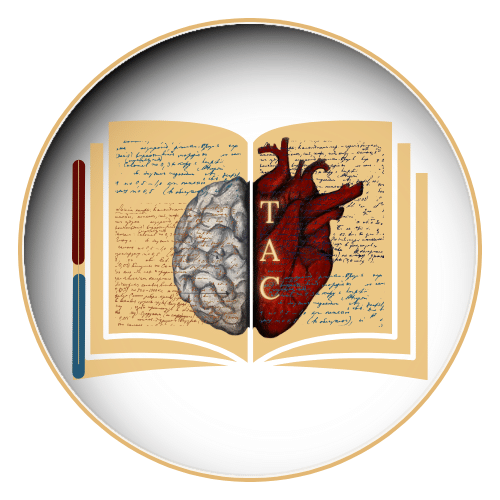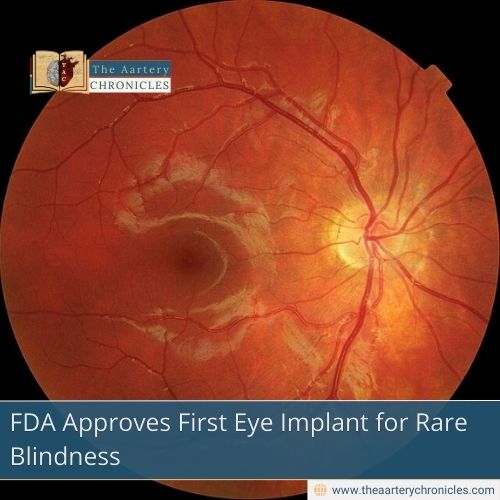

Hidden Fat: The Silent Threat to Your Heart Health
Summary: Deep abdominal (visceral) fat and fat stored in the liver can silently damage arteries, even in people who appear healthy and have a normal BMI. Evidence from MRI imaging of more than 33,000 adults shows that these hidden fat deposits are strongly linked to carotid artery thickening and an increased risk of stroke. These findings challenge the reliability of BMI as a true measure of health and highlight the need for imaging-based assessments to better evaluate cardiovascular risk.
Hidden Fat Is More Dangerous Than You Think: New Study Warns of Silent Artery Damage
Did you know that even if you look lean, hidden fat could be quietly harming your heart? A recent analysis of over 33,000 MRI scans suggests that visceral and liver fat, not just visible weight, are strongly associated with artery damage, stroke, and heart attack risk. This article explores the evidence challenging the long-standing reliance on Body Mass Index (BMI) as the main assessment of obesity and cardiovascular health.
Why Hidden Fat Matters More Than Body Weight
Researchers from McMaster University report that deep abdominal fat surrounding the organs (visceral fat) and fat stored inside the liver (hepatic fat) can silently injure the arteries. This damage can occur even in individuals who appear healthy and fall within a “normal” BMI range. The study, published in Communications Medicine, challenges the decades-long assumption that BMI accurately reflects cardiovascular risk.
Visceral and Liver Fat
Unlike subcutaneous fat that lies beneath the skin, visceral fat accumulates around vital organs such as the liver and intestines. Liver fat, stored within liver cells, is linked to metabolic dysfunction. Both fat types promote:
- Inflammation
- Hormonal imbalance
- Plaque-forming processes within artery walls
They are already known to increase the risk for
- Type 2 diabetes
- Hypertension
- Heart disease
Their direct impact on arteries, however, had remained unclear until now.
High-Resolution MRI Data Reveal the Damage
Using advanced MRI imaging, scientists examined participants from Canada and the United Kingdom. The scans measured both:
- Fat distribution
- Carotid artery thickness
Thickening and narrowing of these neck arteries restricts blood flow to the brain. This significantly raises the risk of:
- Stroke
- Heart attack
“This study shows that even after accounting for traditional cardiovascular risk factors like cholesterol and blood pressure, visceral and liver fat still contribute to artery damage,” says Russell de Souza, co-lead author and associate professor in McMaster’s Department of Health Research Methods.
A Warning for Clinicians and the Public
Despite normal cholesterol or blood pressure, hidden fat may still be silently progressing artery disease.
“The findings are a wake-up call for clinicians and the public alike,” adds de Souza. He explains that physicians must consider hidden fat, not just visible body weight.
Co-author Marie Pigeyre, associate professor in McMaster’s Department of Medicine, contributed to the analysis, which sourced data from two major population studies:
- Canadian Alliance for Healthy Hearts and Minds (CAHHM)
- UK Biobank
What the Research Reveals
Across more than 33,000 MRI results:
- Visceral fat showed a strong, consistent link to artery plaque and wall thickening.
- Liver fat also increased risk, though to a slightly lesser extent.
These associations remained even after adjusting for:
- Diet
- Exercise
- Cholesterol
- Metabolic factors
This suggests the fat itself, not only lifestyle, is a critical contributor.
Why BMI Falls Short
For decades, BMI has been the gold standard for diagnosing overweight and obesity. But the current findings highlight serious limitations:
- BMI cannot differentiate muscle from fat
- BMI cannot detect hidden internal fat
- BMI may offer false reassurance
For people in midlife especially, this means a normal BMI does not guarantee heart health.
Can We See Hidden Fat Without MRI?
Unfortunately, no. That is the central concern.
“You can’t always tell by looking at someone whether they have visceral or liver fat,” says Sonia Anand, corresponding author and vascular medicine specialist at Hamilton Health Sciences.
She explains that these fat types are:
- Metabolically active
- Pro-inflammatory
- Strongly linked to artery damage
What This Means for Future Health Assessment
These findings suggest clinicians may soon integrate imaging-based markers into cardiovascular risk assessment, especially for patients with:
- Family history of heart disease
- Abnormal liver enzymes
- Central abdominal obesity
The research challenges the healthcare community to rethink obesity measurement entirely.
Conclusion
Hidden fat can be just as dangerous, if not more hazardous, than visible weight. Even if body weight seems normal, visceral and liver fat may silently thicken artery walls, increasing the risk of life-threatening vascular disease.
What you can do now
- Discuss imaging-based risk assessment with your doctor
- Prioritize regular physical activity
- Reduce sugar and processed fats
- Monitor liver health markers

Dane
I am an MBBS graduate and a dedicated medical writer with a strong passion for deep research and psychology. I enjoy breaking down complex medical topics into engaging, easy-to-understand content, aiming to educate and inspire readers by exploring the fascinating connection between health, science, and the human mind.








